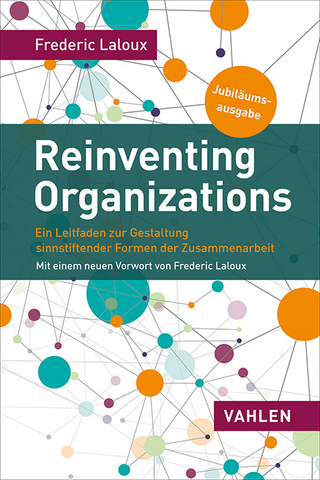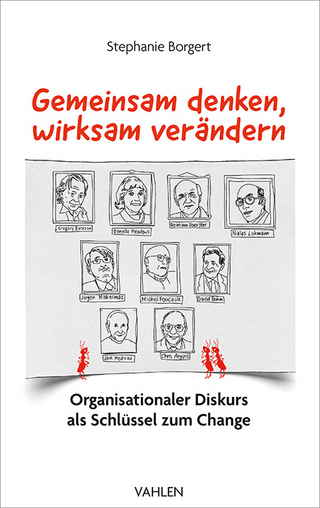
Economic Approaches to Organizations
Pearson Education Limited (Verlag)
978-1-292-12890-0 (ISBN)
Understand the link between management and economics with this unique text. Economic Approaches to Organizations, 6th edition, by Sytse Douma and Hein Schreuder, walks you through different economic approaches in a non-technical way, making it widely accessible. Emphasising the importance of economic issues and developments in the study of organisations and management, the text explores topics such as behavioural theory of the firm, game theory, agency theory, transaction cost economics, the economics of strategy and evolutionary approaches.
The book is unique in the market in its attempt to make the link between management and economics, using practical examples throughout to help you understand how the concepts relate to economic and organisational issues in the world today.
The 6th edition is packed with updated examples taken from real life and includes new chapters and sections, like a separate chapter on behavioural economics that covers bounds on rationality and self-interest as well as prospect theory.
Benefit from the features this edition has to offer:
Use of empirical results and real-world data
A step-by-step conceptual framework to explain fundamental economic approaches to organisations.
Real-life examples.
End-of-chapter questions.
Quotations.
Diagrams.
Further reading and study.
A range of cases with a global link.
With its unique perspective and range of learning features, this text will provide you with a practical understanding of economic approaches used in organisations today.
Sytse Douma is professor of business administration at Tilburg University. Hein Schreuder was executive vice president of corporate strategy and acquistitions at Royal DSM N.V. until 2012. He is honorary professor of business economics at Maastricht University and board member of the Vlerick Business School in Belgium.
Preface xi
Acknowledgements xv
Part I Foundations 1. Markets and organizations
1.1 The economic problem
1.2 The division of labour
1.3 Specialization
1.4 Coordination
1.5 Markets and organizations
1.6 Information
1.7 The environment and institutions
1.8 Historical perspective
1.9 Summary: the conceptual framework of this book
1.10 Outline of the book
Questions
Notes
2. Markets
2.1 Introduction
2.2 Market interaction: analysis of demand and supply
2.3 Decision-making by consumers
2.4 Decision-making by producers
2.5 Market coordination
2.6 The paradox of profits
2.7 Competitive markets
2.8 The main assumptions underlying standard microeconomic theory
2.9 Summary: how according to standard microeconomic theory decisions are coordinated by the market
Questions
3. Organizations
3.1 The world of organizations
3.2 Organizational coordination
3.3 Types of organizations
3.4 Organizational markets
3.5 Organized markets
3.6 The rise of the Internet and the digitization of organizations
3.7 Digital platforms: a new coordination mechanism
3.8 The Platform Organization
3.9 Summary: how organizations achieve coordination
Questions
Notes
4. Information
4.1 Coordination and information
4.2 Hidden information
4.3 Hidden action
4.4 The value of information
4.5 Information as an economic good
4.6 Summary: information problems for markets and organizations
Questions
Notes
5. Game theory
5.1 Introduction
5.2 The prisoner's dilemma
5.3 Coordination games
5.4 The entry game
5.5 The iterated prisoner's dilemma
5.6 Auctions
5.7 Evolutionary game theory
5.8 Summary: insights from game theory
Questions
6. Econs and Humans
6.1 Introduction
6.2 The social domain versus the economic domain
6.3 Economic, social and moral man: bounds on self-interest
6.4 Bounds on rationality
6.5 Prospect theory
6.6 Summary: behavioural economics
Questions
Part II Economic Approaches 7. Behavioural theory of the firm
7.1 Introduction
7.2 The firm as a coalition of participants
7.3 Organizational goals
7.4 Organizational expectations
7.5 Organizational choice
7.6 From bounded rationality to behavioural economics
7.7 Summary: goals and decision-making within the firm in behavioural theory
Questions
Notes
8. Agency theory
8.1 Introduction
8.2 Separation of ownership and control
8.3 Managerial behaviour and ownership structure
8.4 Entrepreneurial firms and team production
8.5 The firm as a nexus of contracts
8.6 Theory of principal and agent
8.7 Applying agency theory
8.8 Summary: agency relations between owners, managers and employees
Questions
Notes
9. Transaction cost economics
9.1 Introduction
9.2 Behavioural assumptions: bounded rationality and opportunism
9.3 Dimensions of transactions
9.4 Peer groups
9.5 Simple hierarchies
9.6 Multistage hierarchies: U-form and M-form enterprises
9.7 Organizational markets
9.8 Digitization and transaction costs
9.9 Markets and organizations: are these all there is?
9.10 Governance in a three-level schema
9.11 Summary: effect of transaction costs on choosing between markets and organizations and organizational forms
Questions
Notes
10. Economic Contributions to business/competitive strategy
10.1 Introduction
10.2 Industry analysis
10.3 Competitor analysis
10.4 Competitive strategy
10.5 Resource-based view of the firm
10.6 Dynamic capabilities
10.7 Move and counter move
10.8Summary: how economic analysis can contribute to the formulation of competitive strategies
Questions
Notes
11. Economic contributions to corporate strategy
11.1 Introduction
11.2 Unrelated diversification
11.3 Related diversification
11.4 Horizontal multi-nationalization
11.5 Vertical integration
11.6 Summary
Questions
Notes
12. Evolutionary approaches to organizations
12.1 Introduction
12.2 Giraffes
12.3 Organizations and giraffes
12.4 Organizational ecology
12.5 An evolutionary theory of economic change
12.6 Comparison
12.7 The evolution of dynamic capabilities
12.8 Further developments
12.9 Summary: the evolutionary perspective
Questions
Notes
13. All in the family
13.1 Introduction
13.2 The basic conceptual framework
13.3 Family resemblances
13.4 Family differences
13.5 Summary: all in the family?
13.6 Organizations as complex, adaptive systems
Questions
Notes
Bibliography
Index
| Erscheinungsdatum | 01.04.2017 |
|---|---|
| Verlagsort | Harlow |
| Sprache | englisch |
| Maße | 188 x 244 mm |
| Gewicht | 665 g |
| Themenwelt | Wirtschaft ► Betriebswirtschaft / Management ► Planung / Organisation |
| Wirtschaft ► Betriebswirtschaft / Management ► Unternehmensführung / Management | |
| Wirtschaft ► Volkswirtschaftslehre ► Mikroökonomie | |
| ISBN-10 | 1-292-12890-9 / 1292128909 |
| ISBN-13 | 978-1-292-12890-0 / 9781292128900 |
| Zustand | Neuware |
| Haben Sie eine Frage zum Produkt? |
aus dem Bereich


